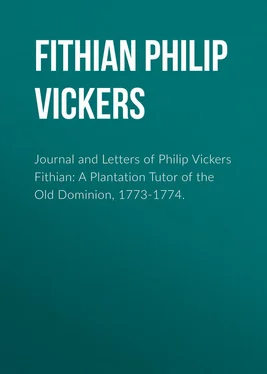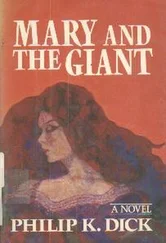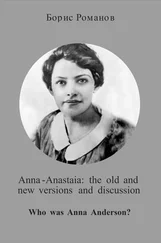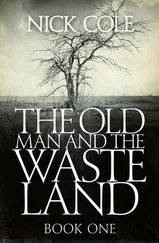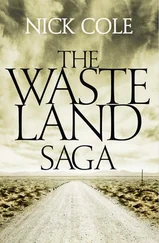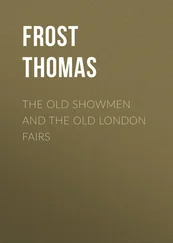Philip Fithian - Journal and Letters of Philip Vickers Fithian - A Plantation Tutor of the Old Dominion, 1773-1774.
Здесь есть возможность читать онлайн «Philip Fithian - Journal and Letters of Philip Vickers Fithian - A Plantation Tutor of the Old Dominion, 1773-1774.» — ознакомительный отрывок электронной книги совершенно бесплатно, а после прочтения отрывка купить полную версию. В некоторых случаях можно слушать аудио, скачать через торрент в формате fb2 и присутствует краткое содержание. Жанр: foreign_antique, foreign_prose, на английском языке. Описание произведения, (предисловие) а так же отзывы посетителей доступны на портале библиотеки ЛибКат.
- Название:Journal and Letters of Philip Vickers Fithian: A Plantation Tutor of the Old Dominion, 1773-1774.
- Автор:
- Жанр:
- Год:неизвестен
- ISBN:нет данных
- Рейтинг книги:3 / 5. Голосов: 1
-
Избранное:Добавить в избранное
- Отзывы:
-
Ваша оценка:
- 60
- 1
- 2
- 3
- 4
- 5
Journal and Letters of Philip Vickers Fithian: A Plantation Tutor of the Old Dominion, 1773-1774.: краткое содержание, описание и аннотация
Предлагаем к чтению аннотацию, описание, краткое содержание или предисловие (зависит от того, что написал сам автор книги «Journal and Letters of Philip Vickers Fithian: A Plantation Tutor of the Old Dominion, 1773-1774.»). Если вы не нашли необходимую информацию о книге — напишите в комментариях, мы постараемся отыскать её.
Journal and Letters of Philip Vickers Fithian: A Plantation Tutor of the Old Dominion, 1773-1774. — читать онлайн ознакомительный отрывок
Ниже представлен текст книги, разбитый по страницам. Система сохранения места последней прочитанной страницы, позволяет с удобством читать онлайн бесплатно книгу «Journal and Letters of Philip Vickers Fithian: A Plantation Tutor of the Old Dominion, 1773-1774.», без необходимости каждый раз заново искать на чём Вы остановились. Поставьте закладку, и сможете в любой момент перейти на страницу, на которой закончили чтение.
Интервал:
Закладка:
Naturally, the character of the schooling provided for the growing generation greatly concerned the Virginia gentlemen. Many, eager to give their children direct contact with the traditional learning and culture of the mother country, sent them for a period of years to English schools. [9] Footnote_9_9 An Englishman visiting Virginia at the close of the eighteenth century stated, with reference to persons he met who had been educated abroad before the Revolution, that he "found men leading secluded lives in the woods of Virginia perfectly au fait as to the literary, dramatic, and personal gossip of London and Paris." Bernard, John, Retrospections of America, 1797-1811 , p. 149.
Not infrequently, mere infants were placed under the protection of relatives and friends in the mother country. As early as 1683 William Byrd II, then nine years old, and his sister Susan, about six, were being watched over in English schools by their Horsmanden grandparents, and plans were making to send over their little sister, Ursula, aged four. Each of the great "King" Carter's five boys was sent overseas at an early age. In 1762 John Baylor of Caroline County, who had received his own education at Putney Grammar School and Caius College, Cambridge, sent his twelve-year-old son to Putney, and about the same time put his four young daughters at a boarding school at Croyden in Kent. [10] Footnote_10_10 Stanard, Colonial Virginia , p. 290.
The high value placed upon schooling in England is well illustrated in the attitude of Robert Beverley of "Blandfield" when he prepared to send his young son, William, abroad in 1773. Confiding the lad for a season to a tutor in the home of his father-in-law, Landon Carter of "Sabine Hall," he carefully explained his purpose. "I would recommend to Mr. Menzies the Latin Lillies Grammar," he wrote Carter, "because, as no other rudiments are used in any Schools of Eminence, when he goes to England, he may in part have gotten over the Drudgery of Education. All I wish to learn him in Virginia is, to read, write, & cypher, & do as much with his Grammar, as the Time will admit of…" [11] Footnote_11_11 Letter of Robert Beverley to Landon Carter, Blandfield, May 19, 1772, in possession of Mrs. William Harrison Wellford of Sabine Hall. Cf. "Extracts from Diary of Landon Carter in Richmond County, Virginia"; William and Mary College Quarterly , Vol. XIII, series 1, pp. 160-163.
Planters frequently provided in their wills that their young sons and daughters be educated abroad. It is likely that an even larger number of small children would have been sent "home," as the planters fondly called the mother country, had their parents not feared the dangers of an ocean voyage and the mortal effects of the smallpox which was raging in England during the eighteenth century.
As an alternative to sending children overseas, the traditional learning of the English schools could be brought to Virginia by English-trained tutors and governesses. Well-to-do planters customarily engaged such persons to instruct their children at home, even when it was planned to send the youngsters abroad later. They also employed dancing and music masters to visit their households at regular intervals. A building near the mansion was generally set aside as a schoolroom. There the master's children and perhaps those of some neighboring planters were taught. The young men and women who came overseas to teach the children of Virginia were honored members of the households in which they lived. Great care was taken in selecting them. After a number of young Scotchmen had come to the colony as tutors during the eighteenth century, it was feared they would "teach the children the Scotch dialect which they can never wear off." [12] Footnote_12_12 William and Mary College Quarterly , Vol. XIX, series 1, p. 145.
Throughout the period one finds frequent mention of the need of suitable instructors in the letters of the planters to their factors in the mother country. After the middle of the century, tutors were sometimes secured from Princeton and other American colleges. [13] Footnote_13_13 Robert Andrews, a Pennsylvania youth educated at "the College of Phileda," served as a tutor at "Rosewell," the Page home in Gloucester County, for several years, and two young men from Princeton taught the Carter children at "Nomini Hall." Cf. letter of John Page, Jr., to John Norton. "Rosewell," September 18, 1772, in Mason, Frances Norton, John Norton & Sons , p. 271. See also page 160.
A goodly number of the youths sent to the English schools enrolled later at the colleges of Oxford and Cambridge, and others who had been educated by private tutors were also sent there. Certain families sent generation after generation of sons to these universities. At intervals from the time that Ralph Wormeley, the second of that name, had matriculated at Oriel College, Oxford, in 1665, until the outbreak of the Revolution, his kinsmen were found in English colleges. Not a few young Virginians attended the Inns of Court.
In his domestic establishment the planter sought to reproduce as nearly as he conveniently could the residence of the English gentry with its gardens, lawns, and parks. Plans of English homes and gardens, which intelligent workmen or even a layman might adapt, were accessible in the handbooks of architecture and gardening found in many of the planters' libraries. In some instances the striking similarity of detail leaves little doubt that the plans for a planter's residence derived directly from plates in these books. All the forms common to the English country architecture of the period were employed in the plantation residences. Sometimes English master builders and gardeners were imported to supervise the construction of the residences and the planting of the grounds.
The vogue for formality in English architecture and landscaping was mirrored in the arrangement of the Virginia estates. The mansions were generally placed according to carefully preconceived plans in a formal setting which nonetheless managed to achieve an air of ease and naturalness. Balance and symmetry were observed everywhere, with the buildings, gardens, and extensive lawns forming component parts of one composition. Walks of brick or oyster shell crossed the grounds in geometric pattern. If a bowling green or formal garden flanked one side of the mansion, an orangery or perhaps a park stocked with deer flanked the other.
English box and other ornamental plants were used with fine effect. Terraces, elaborate parterres, sunken panels, canals, and dramatic vistas gave variety to the scene. "Falling gardens" were popular at the residences situated on high eminences overlooking the great rivers and marshes. [14] Footnote_14_14 A "falling garden" consisted of a series of very broad terraces, usually connected by ramps covered with turf, oyster shell or other surface material to prevent erosion. In some instances the successive levels were planted in elaborate patterns. In others the whole was covered with turf. The "falling garden" at "Sabine Hall" retains its eighteenth-century design intact.
Not infrequently, as at "Blandfield," a ha-ha provided a note of pleasant surprise for one walking on the lawns. [15] Footnote_15_15 A ha-ha is a boundary to a garden, pleasure-ground, or park of such a nature as not to interrupt the view from the mansion and may not be seen until closely approached. According to a French etymologist, the name is derived from ha , an exclamation of surprise, uttered by one suddenly approaching such a boundary. The ha-ha consists of a trench, the inner side of which is perpendicular and faced with a wall; the outer being sloped and turfed. The ha-ha permitted grazing cattle and sheep to appear on the landscape, and at the same time held them at a distance from the mansion. In his diary, George Washington refers, on several occasions, to the ha-has on the grounds at "Mount Vernon." Cf. Fitzpatrick, John, The Diaries of George Washington , Vol. II, passim .
Graceful garden houses, dovecots, and other miniature structures, carefully placed, sometimes imparted a fanciful atmosphere to the whole. Every estate had its orchard, the fruit of which surpassed the choicest specimens of the homeland. Wildernesses or preserves of transplanted trees might be found at some distance from the residence, and sometimes serpentine drives and walks invited one to explore hidden retreats.
Интервал:
Закладка:
Похожие книги на «Journal and Letters of Philip Vickers Fithian: A Plantation Tutor of the Old Dominion, 1773-1774.»
Представляем Вашему вниманию похожие книги на «Journal and Letters of Philip Vickers Fithian: A Plantation Tutor of the Old Dominion, 1773-1774.» списком для выбора. Мы отобрали схожую по названию и смыслу литературу в надежде предоставить читателям больше вариантов отыскать новые, интересные, ещё непрочитанные произведения.
Обсуждение, отзывы о книге «Journal and Letters of Philip Vickers Fithian: A Plantation Tutor of the Old Dominion, 1773-1774.» и просто собственные мнения читателей. Оставьте ваши комментарии, напишите, что Вы думаете о произведении, его смысле или главных героях. Укажите что конкретно понравилось, а что нет, и почему Вы так считаете.
